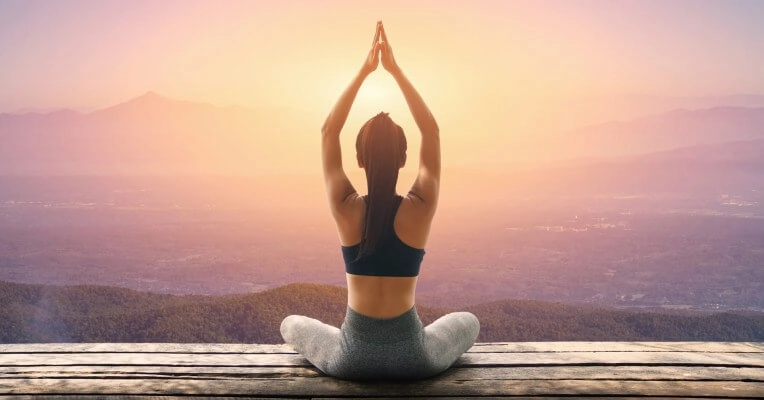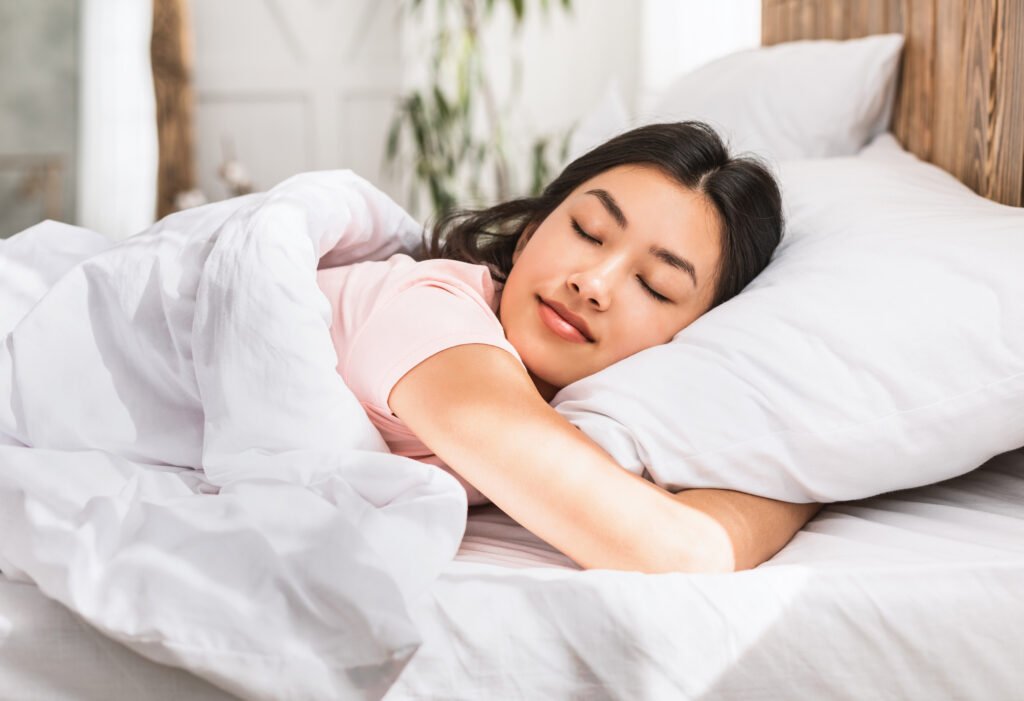Now Reading: 4 Yoga for Stress and Anxiety: A Natural Path to Inner Calm and Balance
-
01
4 Yoga for Stress and Anxiety: A Natural Path to Inner Calm and Balance
4 Yoga for Stress and Anxiety: A Natural Path to Inner Calm and Balance

The Subtle Power of Breath: How Pranayama Brings Calm to the Chaos
In today’s fast-paced world, stress and anxiety have quietly become constant companions for many of us. Whether it’s work pressure, family responsibilities, or just the overwhelming noise of everyday life, the mind often feels like it’s stuck in a never-ending loop of worry and tension. That’s where yoga comes in—not just as a form of exercise, but as a natural remedy that gently guides the body and mind back to a place of balance. Yoga for stress and anxiety is more than just stretching—it’s about learning to breathe, to pause, and to reconnect with the calm within.
Personally, I discovered the healing power of yoga during one of the most challenging periods of my life. A few years ago, I was juggling multiple responsibilities—teaching, freelance work, and personal commitments. I remember waking up feeling exhausted, my heart racing even before the day began. Sleep was broken, my focus was scattered, and I felt like I was constantly carrying a heavy weight. That’s when a friend suggested I try yoga.
I was skeptical at first—how could a few poses and breathing exercises fix what felt like an emotional storm? But I gave it a shot. I started with just 10 minutes a day, focusing on slow movements and deep breaths. Gradually, something shifted. My sleep improved. My thoughts slowed down. I began to feel lighter and more present. Yoga didn’t erase the stress, but it gave me the tools to manage it—and eventually, to rise above it.
Through this post, I want to share four simple yet powerful yoga practices that helped me, and that can help anyone battling stress and anxiety. You don’t need to be flexible or have fancy equipment. All you need is a quiet space, a few minutes of your time, and a willingness to take that first step toward healing. Let yoga be your gentle guide to inner calm and balance—because peace isn’t found outside, it’s nurtured from within.
When it comes to Yoga for Stress and Anxiety, most of us look for solutions outside—medications, distractions, or even digital detoxes. But yoga encourages us to turn inward. One of the most overlooked aspects of yoga’s healing power is pranayama, the ancient science of controlled breathing. It’s not just about inhaling and exhaling; it’s about balancing your nervous system using your breath as a tool.
Simple breathing techniques like Anulom Vilom (alternate nostril breathing) or Bhramari (humming bee breath) can calm the mind within minutes. These practices send a signal to your brain that it’s safe to relax, easing the fight-or-flight response that often gets triggered during anxious moments.
The best part? You can do pranayama anywhere—at your desk, on your bed, or even while waiting in traffic. Over time, incorporating conscious breathing into your routine strengthens emotional resilience and gives you the space to respond to life’s challenges rather than react impulsively.
The Growing Need for Stress Relief
In today’s fast-paced world, stress and anxiety have become common challenges affecting millions worldwide. While medication and therapy are valuable, many seek natural, holistic methods to calm their minds. Yoga, an ancient practice combining physical postures, breathing exercises, and meditation, has gained popularity as an effective way to reduce stress and anxiety. But how exactly does yoga work to ease these overwhelming feelings?
Understanding Yoga’s Role in Stress Reduction
Yoga promotes relaxation by activating the parasympathetic nervous system, which counters the body’s “fight or flight” stress response. Through gentle stretches, mindful breathing, and focused meditation, yoga helps reduce cortisol levels—the hormone linked to stress—and encourages a state of calm and balance.
Breathing Techniques to Calm the Mind
Pranayama, or controlled breathing exercises, is central to yoga’s stress-relief power. Techniques like Nadi Shodhana (alternate nostril breathing) and Ujjayi breath help regulate the nervous system, lower heart rate, and clear the mind of anxious thoughts.
Yoga Poses That Soothe Anxiety
Certain yoga postures are particularly beneficial for calming the nervous system:
- Child’s Pose (Balasana): Offers a safe, restful posture to reduce tension.
- Cat-Cow Pose (Marjaryasana-Bitilasana): Relieves physical and mental stiffness.
- Legs-Up-The-Wall (Viparita Karani): Encourages relaxation and blood circulation.
- Corpse Pose (Savasana): Deep relaxation that resets the body and mind.
Regular practice of these poses can help decrease feelings of anxiety and foster emotional resilience.
Mindfulness and Meditation in Yoga
Yoga’s mindfulness aspect encourages present-moment awareness, helping practitioners detach from stressful thoughts and worries. Meditation integrated into yoga sessions enhances self-awareness and promotes emotional regulation, empowering individuals to respond rather than react to stress.
Embrace Yoga for a Calmer Life
Yoga offers a holistic, natural approach to managing stress and anxiety that nurtures both body and mind. By incorporating yoga into your daily routine—even just 15 minutes a day—you can build a sustainable practice that supports mental clarity, emotional balance, and overall well-being. Whether you’re a beginner or experienced yogi, the benefits of yoga for stress relief are accessible to everyone.
Why Consistency Matters More Than Complexity
One common misconception is that you need to twist into a pretzel or do advanced yoga poses to experience mental benefits. But the true magic of yoga lies in consistency, not complexity. Just 15 to 20 minutes of simple postures like Child’s Pose (Balasana), Legs Up the Wall (Viparita Karani), or Seated Forward Bend (Paschimottanasana) can help release tension held in the body.
By practicing regularly—even if it’s just a few minutes every day—you teach your body and mind to shift into a state of ease and clarity more often. It’s like training a muscle: the more you practice, the more natural it becomes to stay calm in stressful situations.
A Personal Touch: What I’ve Experienced Firsthand
Speaking from personal experience, yoga didn’t change my life overnight. But over weeks and months, I noticed something subtle yet powerful—I stopped reacting so quickly, my sleep became more restful, and those anxious thoughts that used to feel overwhelming started to lose their grip.
This shift didn’t happen because I was perfect in my practice. It happened because I kept showing up for myself, even on days when I didn’t feel like it. That’s the real beauty of yoga—it meets you where you are and gently guides you toward balance.
Yoga Nidra: The Deep Rest You Didn’t Know You Needed
Another powerful yet underrated practice is Yoga Nidra, also known as yogic sleep. It’s a guided meditation done lying down, where the body is completely relaxed while the mind remains aware. Within 20–30 minutes, Yoga Nidra can take you into a deeply restorative state—often compared to several hours of deep sleep.
Research shows that Yoga Nidra reduces cortisol (the stress hormone), helps regulate emotional responses, and improves overall mental clarity. If you’ve been struggling with stress and anxiety-related insomnia or fatigue, this could be a game-changer.
Creating a Safe Space Through Movement
Yoga isn’t just a series of poses—it’s a moving meditation, a safe space where you reconnect with your body. For many people dealing with anxiety, being in their own body feels uncomfortable. Yoga gently guides us back, helping release stored emotions and reconnect with our inner strength.
Whether it’s a flowing Vinyasa sequence or a slow Hatha session, the key is to listen to what your body needs each day. Some days you may feel energetic and ready for movement; other days, just resting in a few supported poses can be equally powerful.
Make It Your Own Journey
There’s no one-size-fits-all approach to yoga. The beauty lies in its flexibility—both literally and metaphorically. What works for someone else may not work for you, and that’s okay. The goal isn’t to perform perfectly but to feel more present, more grounded, and more in control of your emotions.
Start small. Breathe consciously. Move gently. And most importantly, be kind to yourself. With time, you’ll begin to notice that yoga isn’t just something you do—it becomes a way of being, a way to return to yourself whenever life feels overwhelming.















